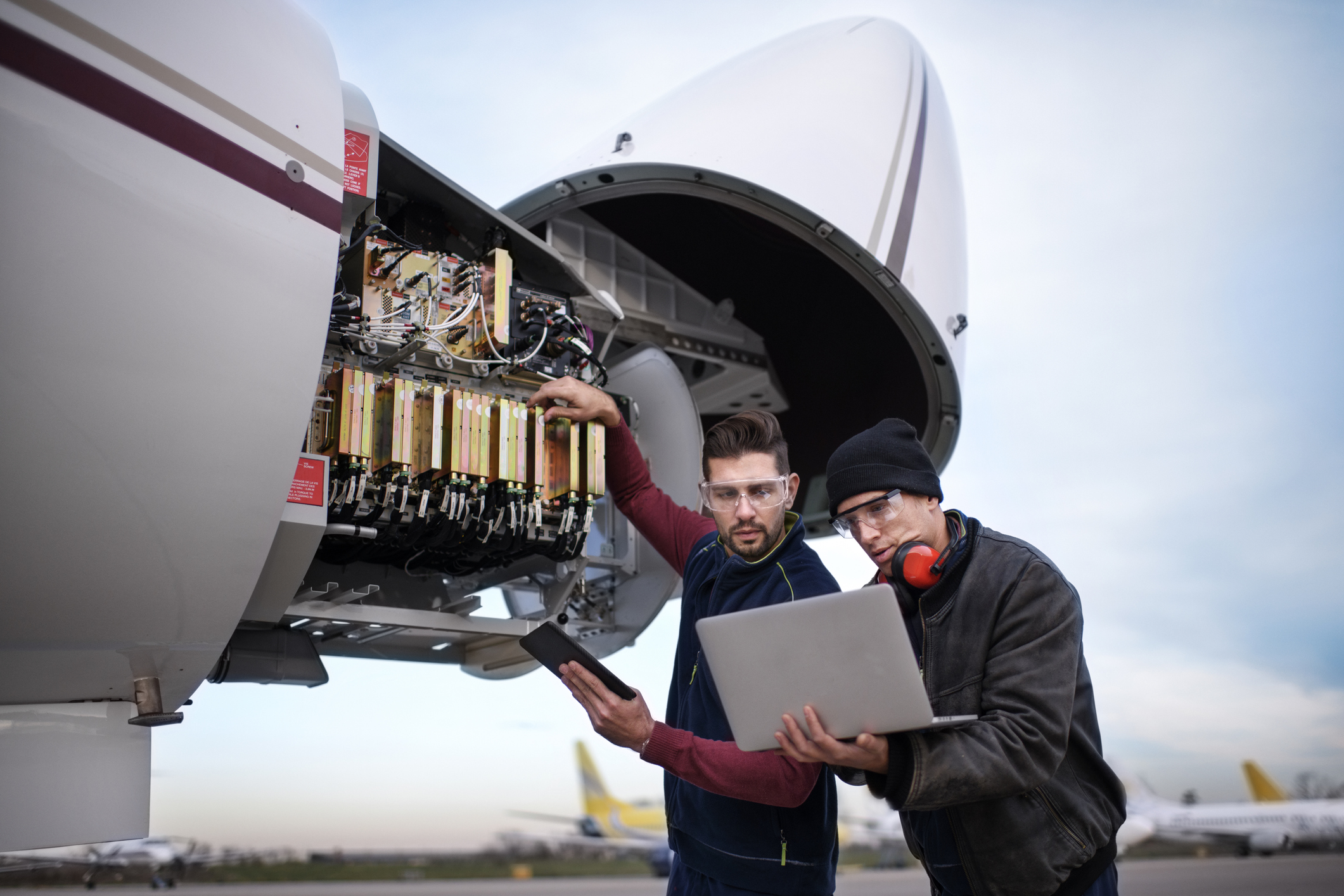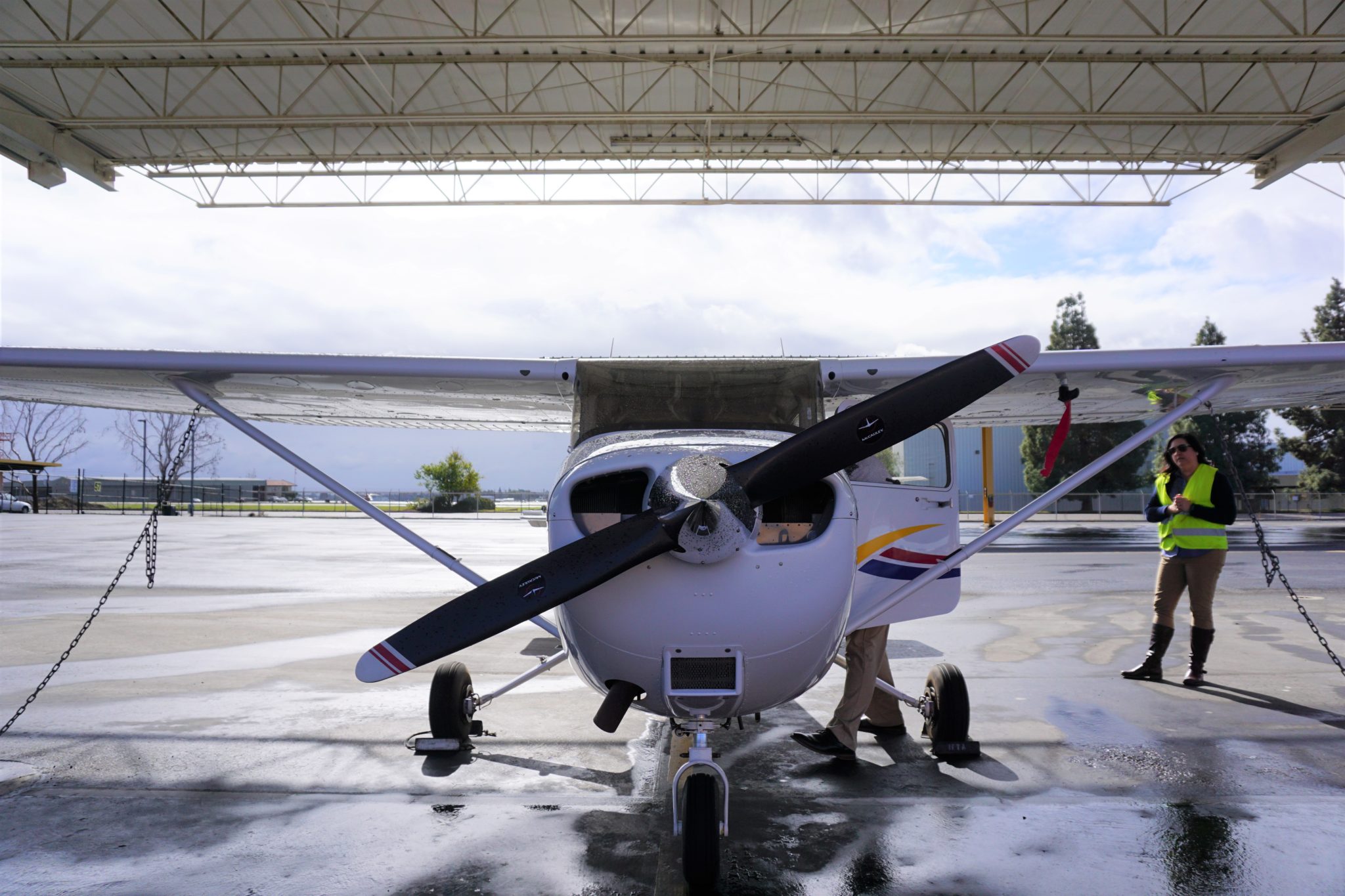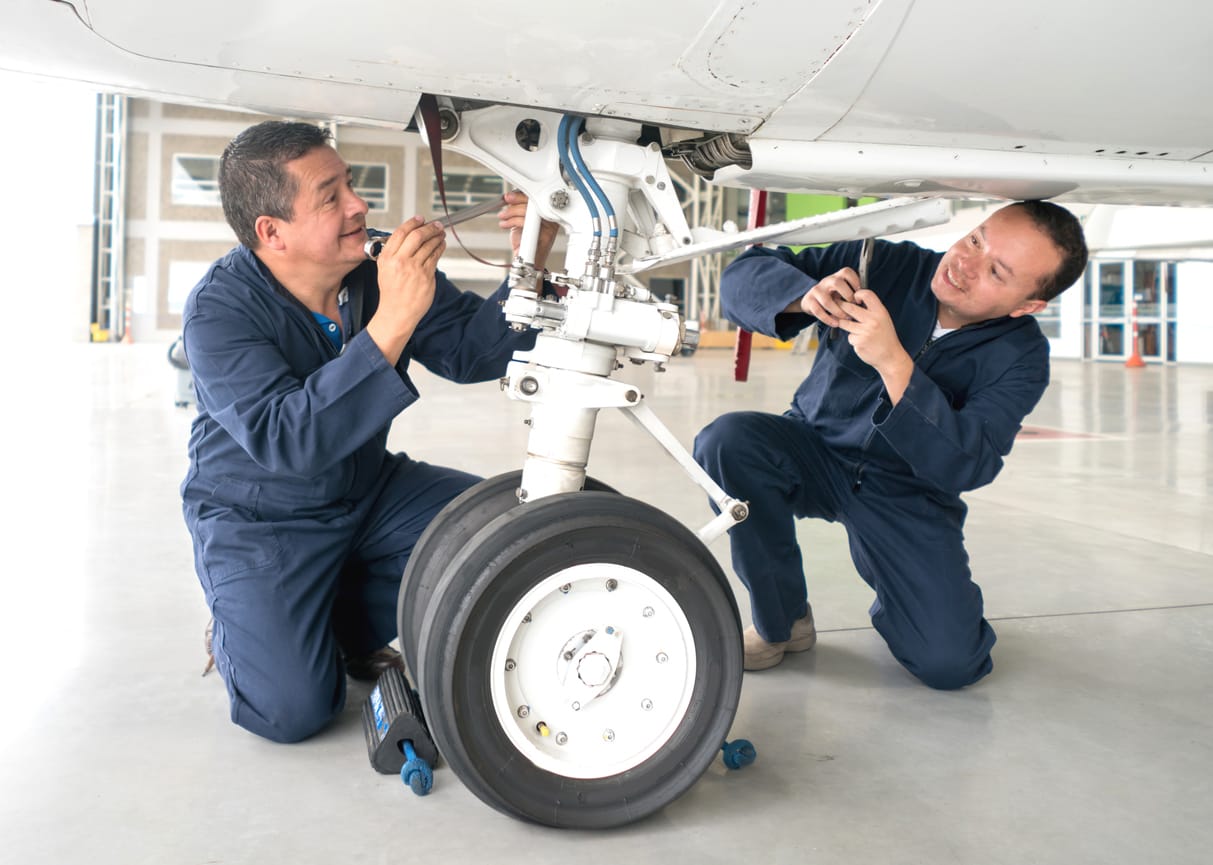It’s easy to think of airplane maintenance as simply “fixing what’s broken.” But there’s much more to than that to keeping an airplane healthy and in flying condition. Before you step into the cockpit or passenger’s seat, there’s a lot to think about regarding the airplane’s maintenance status.
Maintenance needs are different depending on the type of aircraft, how long it has been in service, whether or not its engine is a jet, and other factors. Knowing what to look for, as well as familiarity with the maintenance needs of airplanes you fly regularly, can help keep both you and the aircraft flying safely.
How to Choose an Airplane Repair Service
Servicing an airplane isn’t like simply pulling a car off the road into the nearest tire shop. There are many considerations to keep in mind. Some airports and fixed base operators offer maintenance shops, but these must be certified by the Federal Aviation Administration. Both maintenance shops and the employees who perform certain functions on the airplane are answerable to the FAA. They are governed by the FAR Part 145. In addition, for certain types of aircraft, such as the Cirrus, shops, and techs must be specially certified and authorized to work on the airplane.
Mechanics who work on airplanes are regulated under FAR Part 65. They are called either aircraft mechanics or maintenance technicians (AMTs) and must undergo rigorous training before they are permitted to act as such. Some gain experience in the military or through an apprenticeship; other techs start in the classroom. The process can take anywhere between 18 and 30 months and involves hands-on training, testing, and becoming familiar with many different types of airplanes. Most AMT’s specialize in various areas of an aircraft, such as its power plant, avionics, or airframe.
The FAA certification, which involves a practical test, a written test, and an oral exam, is referred to as the A&P license. Prospective A&Ps must have reached the age of 18 and if they plan to work in the United States, demonstrate that they can communicate well in English. A successfully licensed, FAA-sanctioned airplane mechanic or maintenance technician is detail oriented and able to diagnose issues quickly. Increasingly, techs must be comfortable in working with integrated computer systems.
Part of the Departure Checklist
Student pilots might be familiar with changing the oil in a car after a certain amount of time or when the car has stacked up a certain number of miles. In an airplane, the situation is more complicated and regulated. The FAA requires aircraft pilots and owners to closely monitor use and safety standards.
Even if it is performing as expected, an aircraft might require a visit to the maintenance shop after every few flight hours, flight cycles, or simple passage of time. Good pilots, while performing their departure checklist, know to carefully inspect the maintenance records of the aircraft they are prepping. This lets them know if the airplane has been recently repaired, if or even if it is not airworthy due to an extended period of inactivity or lack of visits to a mechanic.
Routine Maintenance
Sometimes the airframe of an airplane performs perfectly safely, but its engine or various control services or parts require attention. In other cases, a part may be working well but past its FAA-established flight cycle. If this is the case, the owner of the aircraft must replace the part in order to keep the airplane in the air.
Regular maintenance includes cleaning the interior components of an aircraft and clearing away any corrosion while applying chemicals to slow the growth of additional corrosion. This is especially important in humid climates near seawater, such as the Florida Atlantic coast. Various parts of the aircraft might require lubrication or repair, and checking fuel lines could involve completely draining the fuel tank and the system that feeds it. Other areas requiring attention and regular checks include the pneumatic and hydraulic systems in the airplane.
Large passenger jets are no different. The life cycle of a big expensive jet is generally fairly long, but that’s because it is maintained a great deal. Every few months or years, the FAA mandates that passenger planes transfer from the line to the maintenance shop for an overhaul or various replacements. Some undergo a complete restore every decade.
When Something Goes Wrong
Pilots need to prepare for worst case scenarios if the airplane they are flying experiences a mechanical failure. Paying attention to checklists, carefully following them, and staying in contact with air traffic control is essential in finding the ground safely and quickly. The most important aspect to keep in mind once landing is to assess and report the damage. Doing so could save the life of the next pilot. This, again, is why preflight inspections are so vital. Damage might not manifest itself visually, or it might not become apparent until after the airplane is started again.
Sometimes pilots are forced to land in areas where a certified mechanic shop is not available. In these situations, an A&P can travel to the airplane, or the airplane can be transported to an appropriate shop. Depending on insurance policies, such transport might be covered.
Review and Repair
Airplanes can be holistically affected by local damage. For example, damage to the landing gear might result in undue stress on the airframe. That’s why paying close attention to unusual noises, behaviors, or avionics messages is such an important part of preventative maintenance.
Mechanics and even engineers can help to survey the structure of the airplane and assess which repairs should be carried out, and how. Especially after accidents, airplanes are carefully examined to determine if they are still airworthy for their intended use. Sometimes this might result in changing the airplane’s “job”; if an airliner experiences a dip in salt water but is otherwise structurally sound, for example, it might find new life as a cargo hauler. Others can be parted out or used in training, or even become museum features.
Ready to soar in your aviation career?
Mr. Matthew A. Johnston has over 23 years of experience serving various roles in education and is currently serving as the President of California Aeronautical University. He maintains memberships and is a supporting participant with several aviation promoting and advocacy associations including University Aviation Association (UAA), Regional Airline Association (RAA), AOPA, NBAA, and EAA with the Young Eagles program. He is proud of his collaboration with airlines, aviation businesses and individual aviation professionals who are working with him to develop California Aeronautical University as a leader in educating aviation professionals.



